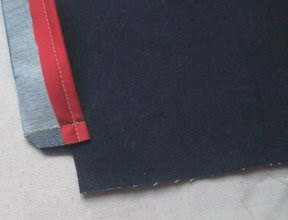It will be quiet on my blog for a while. I didn't do any actual sewing after finishing my jacket. Started making a lin gerie set, but even though I usually make a set in small periods of say 15 or 20 minutes at a time, there just is no time to do a lot on it.
And also there is/was not a lot of time to read reviews or blogs. I do skim a lot of posts in between through the reader, but don't comment a lot at the moment.
Most frustrating on having no sewing time at the moment is the fact that I didn't even redo my coat muslin. I intend to make (yet another) muslin in size 40 and do an FBA. This like Nancy K suggested, as I never sew 44 for tops in BWOF sizes. And this coat seems to have enough room in the upper part. All those who commented on my muslin where very right on that part.
Nancy K asked what interfacing I will use to stabilize the fabric, and it will be Vlieseline H410 (this is sold in other parts of the world as Vilene).
Coming week is finishing a lot of work and then I'll be away for two weeks. I'll be back sewing somewhere in the second half of August I hope. In the meantime I will think of what to make of these fabric combinations. I'm so inspired by all the capsules and mini-wardrobes I've seen in the past months. And then it will also be time to do some fall sewing, which I think is more inspiring than summer sewing. And I do want to finish that coat!
 | Black/white/red. The bouclé is from Fashionista fabrics. It will be a jacket. Striped black a pair of pants, white a blouse and the black is a knit for a nice t-shirt. |
 | Blue/white. The right aqua will be a jacket too (can you tell I love jackets) and the stripe in the other fabric has exactly the same color. The other blue is a linen pants that's almost finished, but an UFO for three weeks now. The white the same fabric as above for a blouse. |



















































